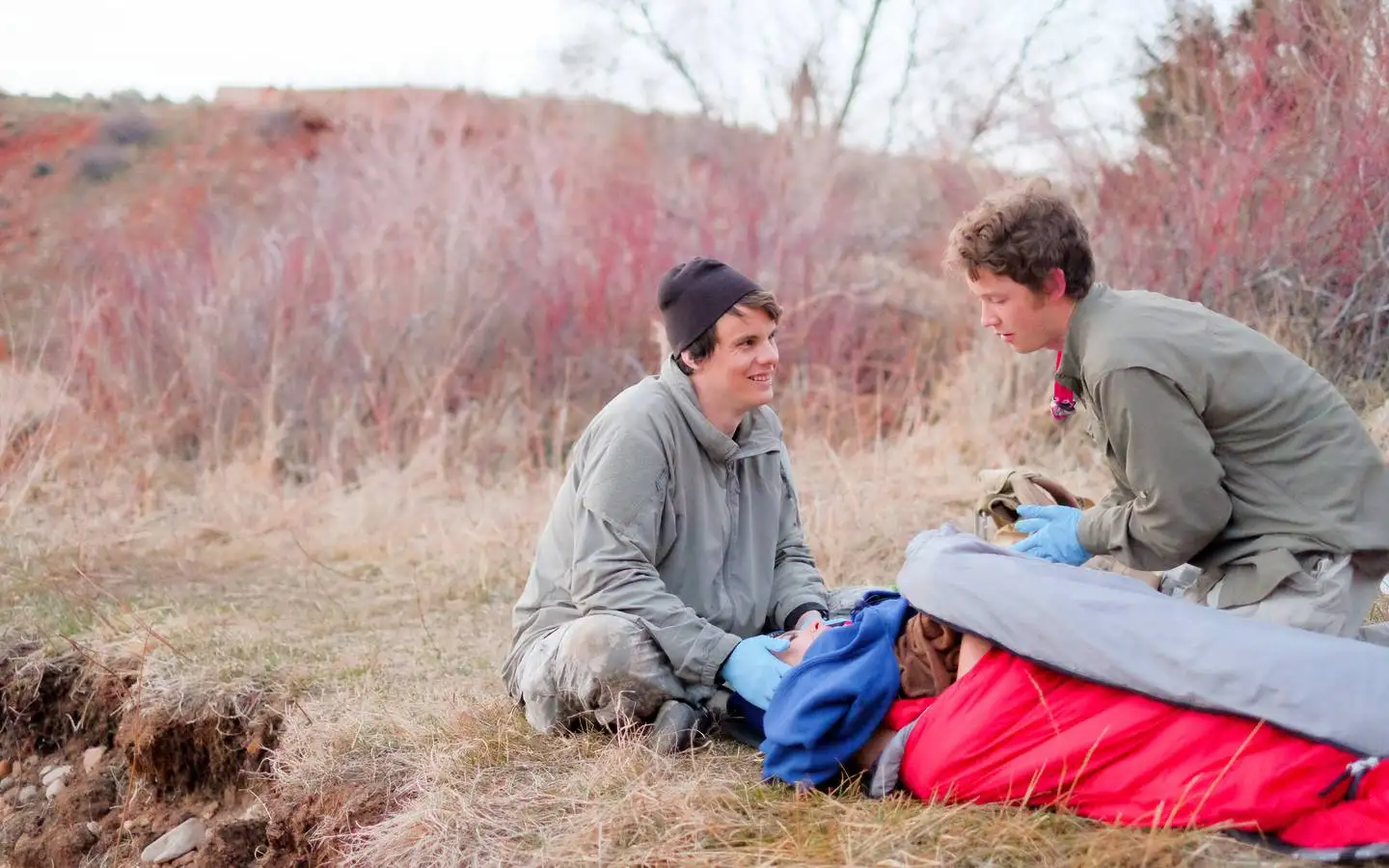The Setting
You have been participating in the annual Yellowstone Ski Festival, in West Yellowstone, MT. This event happens every year over Thanksgiving and provides an opportunity for you to get up on your Nordic skis before most other places in the West. The date is Sunday, November 25th. The festival is over. You and your party are packing up to head home.

SOAP Report
Subjective/Story/Summary
The patient, a member of your entourage, is a 40-year-old male who is complaining of dull, achy pain and limited range of motion localized around his left elbow. The pain began on Friday evening, the 23rd, after two days of hard skate skiing–the first of his season. The pain is currently a 5-6 on a 1-10 scale. The elbow is very tender. Pain spikes to a 9 when it is bumped.
Objective
Patient is uncomfortable from the pain and is unable to move his arm through his full range of motion. Patient states, “I must have tweaked my elbow over the last couple of days and developed some acute bursitis.”
Patient Exam:
The left elbow is noticeably red and swollen. Swelling seems to extend several inches both distal and proximal to the elbow.
Vital Signs
| TIME | 0800 hrs, Nov 25 | 0800 hrs, Nov 26 |
| LOR | A+OX4 | A+OX4 |
| HR | 84, strong, regular | 86, strong, regular (High for this patient. Normally 50-60) |
| RR | 16, regular, easy | 16, regular, easy |
| SCTM | Pale, Warm, Dry | Pale, Warm, Dry |
| B.P. | Not taken | Not taken |
| Pupils | PERRL | PERRL |
| T° | Not taken | 100°F oral |
History
| Symptoms: | Patient is uncomfortable and fatigued |
| Allergies: | None stated |
| Medications: | Patient began taking 400 mg of ibuprofen every 4-6 hours for pain beginning at 0800 hrs on 11/24. |
| Pertinent Hx: | Patient denies any similar history. Patient states he has a history of elbow tendonitis and of small lesions on his elbow the week before related to some “eczema-like bumps” he has gotten on/off since childhood. |
| Last in/out: | Patient has been well-hydrated and his appetite has been good. Reports normal bowel function. Patient urinated clear urine this morning. |
| Events: | Patient skate skied hard for the first time this season on Nov 22 and 23. Pain began evening of Nov 23. Patient participated in a ski clinic on Nov 24 and the elbow remained sore with limited range of motion throughout the day. |
Stop...
What is your Assessment and Plan?
Take a few minutes to figure out your own assessment and make a plan.
Don’t cheat—no reading on without answering this first!
Assessment
- The patient appears to have an infection that is becoming systemic.
The Plan
- You’ll drive yourself home (there is no local hospital) and see a physician tomorrow morning.
- In the backcountry the patient should be evacuated for physician evaluation and possible antibiotic therapy.
Anticipated Problems
- The greater the delay in treatment the higher the likelihood the infection will become more severe.
Comments
- It may be difficult to decide if local swelling, without an obvious wound, is due to a muscle strain, bug bite, or infection. The possibility of a deep infection, which can develop into a serious tissue-destroying lesion, is a concern. In some cases, history may help rule out the muscle strain.
It’s important to recognize the signs of infection that are inconsistent with “tweaking” the elbow. The redness and fever are red flags that something else may be going on. A typical musculoskeletal injury might be swollen and painful but shouldn’t have signs of an infection. If infection is a concern, antibiotics should be started to try to avoid progression and can be discontinued later.
The four cardinal signs of a soft tissue infection are: redness, swelling, warmth, and local pain. There also may be faint red streaks radiating from the site, fever, chills, swollen lymph nodes, pus draining from the wound, or abscess formation. The progression of increased pain, warmth, increased soft tissue swelling, and expansion of redness over 18-24 hrs suggests infection. Drawing a circle around the swollen area with a pen will help you determine if the infection is spreading or resolving.
Key Points:
- This patient, motivated to ski, disregarded the swelling, pain, and especially the fever.
- Any area of redness should be watched closely during the first 18-36 hours.
- Have a high level of suspicion for infection for any soft tissue problem. Think, “Is this an infection?”
- Oral antibiotics should be started early.
- Hot soaks or compresses every 1-2 hours, if possible, and elevation/immobilization are important.
- Expedite the evacuation of any infection without improvement within 24-36 hours of initiating antibiotics and/or with systemic signs (fever, chills). Antibiotic therapy should be continued during evacuation.
End of the Tale
This patient was seen at their hometown medical clinic on Nov26 and prescribed the antibiotic augmentin orally. On Nov27 the patient’s condition remained unchanged and he was referred to the local hospital Emergency Department where he received four doses of IV clindamycin over the next two days followed by 13 days of oral clindamycin, 3X’s/day. On Nov30 the olecranon bursa was lanced and packed open for drainage until Dec4. Diagnosis was septic olecranon bursitis due to staphylococcus infection. The strain of staph was not MRSA and when cultured was resistant only to penicillin and ampicillin. After 21 days patient had made a full recovery.
